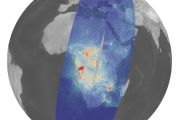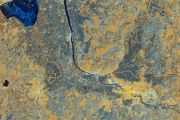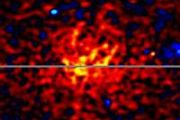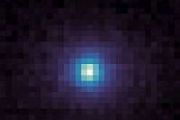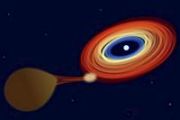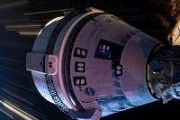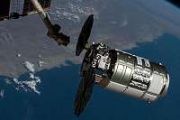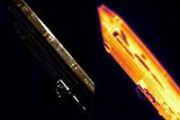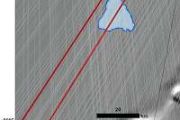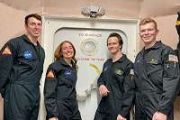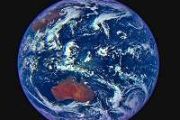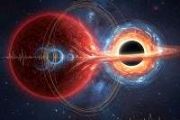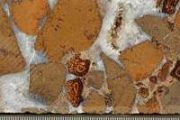
Copernical Team
Astronaut training in the land of volcanoes
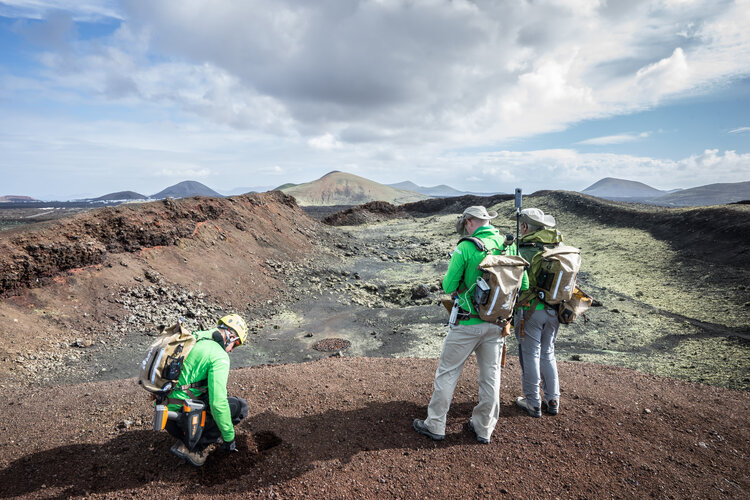
A team of astronauts, engineers and geologists is travelling to Spain’s Canary Islands, one of Europe’s volcanic hot spots, to learn how to best explore the Moon and Mars during ESA’s Pangaea geological training course.
Interview with Thomas Pesquet on return to Earth a second time
 Video:
00:04:56
Video:
00:04:56
ESA astronaut Thomas Pesquet gives a brief interview in Cologne, Germany, less than 48 hours after leaving the International Space Station.
He talks with ESA web TV editor Gaelle Lacroix in French and ESA editor Julien Harrod in English about returning to Earth after his six-month International Space Station mission Alpha, how it feels to splash down in a SpaceX Crew Dragon, and the differences with the Russian Soyuz spacecraft that flew him to space on his first mission, Proxima, in 2017.
After completing two six-month Space Station missions in five years, Thomas recounts the changes he saw while observing
NASA's big new moon rocket is stacked, awaiting launch
 NASA is nearing the final stages of rehearsal and checkouts of the Artemis I moon rocket - the first rocket of its kind since the Apollo program - before an uncrewed launch from Florida around the moon planned for early next year.
The 322-foot-tall SLS rocket and Orion capsule are completely assembled and stacked at Kennedy Space Center, a glowing orange and white tower reaching almos
NASA is nearing the final stages of rehearsal and checkouts of the Artemis I moon rocket - the first rocket of its kind since the Apollo program - before an uncrewed launch from Florida around the moon planned for early next year.
The 322-foot-tall SLS rocket and Orion capsule are completely assembled and stacked at Kennedy Space Center, a glowing orange and white tower reaching almos New agreement between Virgin Orbit and ANA Holdings sets the stage for 20 Launcherone flights from Japan
 Virgin Orbit, the responsive launch and space solutions company that has announced a planned business combination with NextGen Acquisition Corp. II, today announced that it has entered into a memorandum of understanding with ANA HOLDINGS INC., the owners of Japan's largest airline, to procure twenty flights of the LauncherOne rocket and to lead the effort to provide funds and support for those o
Virgin Orbit, the responsive launch and space solutions company that has announced a planned business combination with NextGen Acquisition Corp. II, today announced that it has entered into a memorandum of understanding with ANA HOLDINGS INC., the owners of Japan's largest airline, to procure twenty flights of the LauncherOne rocket and to lead the effort to provide funds and support for those o The Re-Emergence of China: The New Global Era
 The current narrative concerning China promulgated by the Western media and many political commentators is invariably hostile. This positioning is especially notable in the US and the UK. Whether out of a fixation with projecting power or motivated by ideological propaganda, this is a distorted perception.
While there are policy areas where, as with any country there is room for criticism
The current narrative concerning China promulgated by the Western media and many political commentators is invariably hostile. This positioning is especially notable in the US and the UK. Whether out of a fixation with projecting power or motivated by ideological propaganda, this is a distorted perception.
While there are policy areas where, as with any country there is room for criticism Crew Dragon Endeavour recovered after a successful splashdown
 The SpaceX Crew Dragon Endeavour spacecraft is lifted onto the GO Navigator recovery ship after it landed with NASA astronauts Shane Kimbrough and Megan McArthur, Japan Aerospace Exploration Agency (JAXA) astronaut Aki Hoshide, and ESA (European Space Agency) astronaut Thomas Pesquet in the Gulf of Mexico off the coast of Pensacola, Florida, Monday, Nov. 8, 2021. Kimbrough, McArthur, Hoshide, an
The SpaceX Crew Dragon Endeavour spacecraft is lifted onto the GO Navigator recovery ship after it landed with NASA astronauts Shane Kimbrough and Megan McArthur, Japan Aerospace Exploration Agency (JAXA) astronaut Aki Hoshide, and ESA (European Space Agency) astronaut Thomas Pesquet in the Gulf of Mexico off the coast of Pensacola, Florida, Monday, Nov. 8, 2021. Kimbrough, McArthur, Hoshide, an Virgin Galactic announces Q3 2021 financial results
 Virgin Galactic Holdings, Inc. has announced its financial results for the third quarter ended September 30, 2021.
"We are entering our fleet enhancement period with a clear roadmap for increasing the durability, reliability and predictability of our vehicles in preparation for commercial service next year," said Michael Colglazier, Chief Executive Officer of Virgin Galactic.
"Demand
Virgin Galactic Holdings, Inc. has announced its financial results for the third quarter ended September 30, 2021.
"We are entering our fleet enhancement period with a clear roadmap for increasing the durability, reliability and predictability of our vehicles in preparation for commercial service next year," said Michael Colglazier, Chief Executive Officer of Virgin Galactic.
"Demand China's Mars orbiter enters remote-sensing orbit
 China's Mars orbiter entered its remote-sensing orbit around Mars on Monday, starting the global remote-sensing exploration of the planet, the China National Space Administration (CNSA) said.
The CNSA said the orbit was set according to the needs of the orbiter in conducting global detection and relaying communications between the Mars rover and Earth.
The seven scientific payloads a
China's Mars orbiter entered its remote-sensing orbit around Mars on Monday, starting the global remote-sensing exploration of the planet, the China National Space Administration (CNSA) said.
The CNSA said the orbit was set according to the needs of the orbiter in conducting global detection and relaying communications between the Mars rover and Earth.
The seven scientific payloads a Hubble's Advanced Camera for Surveys Instrument resumes science, investigation continues
 The Hubble team successfully recovered the Advanced Camera for Surveys instrument Nov. 7. The instrument has started taking science observations once again. Hubble's other instruments remain in safe mode while NASA continues investigating the lost synchronization messages first detected Oct. 23. The camera was selected as the first instrument to recover as it faces the fewest complications shoul
The Hubble team successfully recovered the Advanced Camera for Surveys instrument Nov. 7. The instrument has started taking science observations once again. Hubble's other instruments remain in safe mode while NASA continues investigating the lost synchronization messages first detected Oct. 23. The camera was selected as the first instrument to recover as it faces the fewest complications shoul Chinese astronauts' EVAs to help extend mechanical arm
 The extravehicular activities (EVAs) carried out by two Chinese astronauts from Sunday evening till early Monday morning will help expand the capabilities of the mechanical arm on the country's space station, said the China Academy of Space Technology (CAST).
Astronauts Zhai Zhigang and Wang Yaping were out of China's space station core module Tianhe by 8:28 p.m. (Beijing Time) Sunday, and
The extravehicular activities (EVAs) carried out by two Chinese astronauts from Sunday evening till early Monday morning will help expand the capabilities of the mechanical arm on the country's space station, said the China Academy of Space Technology (CAST).
Astronauts Zhai Zhigang and Wang Yaping were out of China's space station core module Tianhe by 8:28 p.m. (Beijing Time) Sunday, and 









